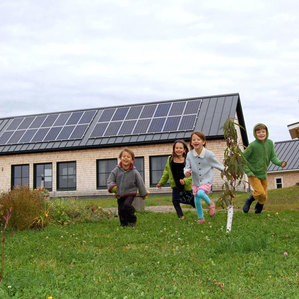 By Sarah Lozanova Our homes can be comfortable and energy-efficient: Especially if we borrow from the high-performing, effective ideas used around the world in “passive houses.” Developed by the German Passivhaus Institut in 1996, a Passivhaus is defined by core efficiency standards. What does this mean in practice? Homes built to the Passive House standard are extremely comfortable to live in—with natural daylighting, even temperatures throughout and virtually no drafts. Passive homes require 90 percent less energy to heat because energy losses are minimized with generous amounts of insulation and air sealing. The homes are heated largely by solar heat gains and internal gains from people and electrical equipment. Although fully retrofitting a home to the passive house standard is usually very costly, we can use many of the elements of passive home design to make our homes more efficient. Apply the following concepts to your home to boost comfort and reduce energy bills. Boost Winter Solar GainSouth-facing windows and, to a lesser extent, east- and west-facing windows help gradually warm our homes with solar energy. Maximizing this free energy source reduces dependence on heating systems, in turn lowering utility bills in cold climates and promoting indoor air quality. Forced air heating, for example, can carry dust with the heat as it passes through duct work, while wood-burning stoves and heating systems that use natural gas or propane can emit carbon monoxide. Wood-burning stoves also can produce breathable pollutants such as smoke and ash. Clean southern windows and remove screens. When the heating season begins, remove screens on south- and east-facing windows and wash the windows to increase your solar gains by up to 40 percent. Keep screens in the west- and north-facing windows to provide protection from the winter wind. Avoid shading southern windows in the winter. Evergreen vegetation, carports and porches can shade southern windows, hindering solar gains. In colder climates, plant only deciduous trees and shrubs (which lose their leaves in winter) outside south-facing windows, or space vegetation and structures far enough away from the house to avoid shading southern windows. Expand with a solar addition. If you are planning an addition on your home, consider adding a sunroom, which can help heat your home. Effective sunrooms face south, include lots of thermal mass, are thoroughly insulated, and include ventilation options with windows, doors and skylights. Read More... |